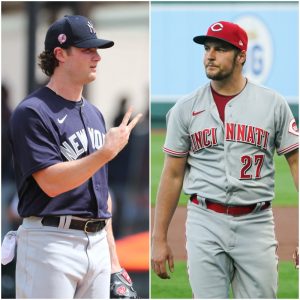An ad-free subscription to MLBTR costs just $2.99 per month or $29.89 per year. Check out the full benefits here, and consider these real testimonials from current subscribers:
I’ve read MLB Trade Rumors for the last 10 years and I love the Front Office Membership! My favorite part is definitely the weekly chats since there are less of us, it is way more personable and I get multiple questions answered every week usually! I’ve read you guys for free for a decade and now it’s my turn to pay up and it’s well worth it! – Griffin C.
MLB Trade Rumors is the first thing I read each morning, and I check back multiple times during the day to make sure I’m not missing any breaking baseball news. I know the site costs money to maintain, and the writers can’t live on air. So I’m happy to contribute to running the site, and view it as voluntarily paying my fair share. The extra content is nice also. One has a much better chance of getting a question answered in the smaller FO chats. Also the advertisement free experience is good too. – Tony M.
I’m really enjoying the access to exclusive content (articles and chats) that being a Front Office member brings. High quality, lockdown-friendly materials that we all need, now, more than ever. – Andrew R.
I wondered for years how MLBTR could operate with such a high level of writing and current news, for free. The added benefits that come with membership make the subscription fee a steal. – Marc B.
I was happy to pay to support them and look forward to continuing to participate in all their subscription benefits such as their weekly chats with their great writers. – Matt P.
These guys have been working hard to bring us the best most up to date baseball news for years. COVID has made things tough all around. I encourage everyone who can afford it, to help keep the ship afloat in tough times, by joining! – J. Allen
I’ve been a huge fan of MLB Trade Rumors since Day One and when the option of becoming a paid subscriber came about, I did not hesitate! – Jimmy A.
No ads is awesome but the real icing on the cake is the premium, professional insight we get that the normal site doesn’t show. – Daniel M.
$0.83 a day, $2.50 a month for baseball content you can’t find anywhere else, NO brainer. – Bernie
One of my very best investments of 2020. – R. Clark
The exclusive member emails and chats are great. They really make me feel like I’m part of a larger community. – Joe P.
My MLBTR subscription is well worth the money! No ads and subscriber exclusive content combined with helping support MLBTR is a home run! – Jason T.
My favorite baseball content site; especially during hot-stove season. Happy to support the great work they’re doing, and the premium experience they offer is great and well worth the nominal price. – Drew B.
MLB Trade Rumors is the first site I go to every morning for updates on baseball transactions, and it’s the site I check in with several times a day to be sure I’m up to date on the latest news. And being a Front Office member builds on those benefits with members-only chats that greatly increase the odds of my questions being answered, Mailbags that allow me to send in questions that require more time and words to answer compared to a chat, and exclusive long-form articles diving deeper into various topics. The benefits Front Office provides are definitely worth the price. – Greg S.
MLBTR Front Office is the single best source of not only all things baseball, but also provides the most intelligent insight anywhere. If ever there was a web site worthy of reasonable subscription, it’s MLBTR! – Stephen M.
Best investment I’ve ever made when it comes to baseball. As a paid member of MLBTR I really feel like an insider. Private chats with paid members really feels like we are on the cutting edge of MLB happenings. – Stevie M.
Upgrading to the subscription base model is well worth the investment, which by the way is minimal. Plus I want to support hard working real baseball people who are providing me all the information I need in one place! Thanks MLBTR for all you do! – Tom M.
MLBTR, Hoops Rumors and Pro Football Rumors are my go-to for sports breaking news, forecasts, commentary and community discussion. The Front Office is a great value and excellent and exciting way for me to help support this content. – Dallin B.
MLBTR is, by far, the best place to keep track of MLB. I find myself checking in several times a day. The site is addictive. And now that I’ve paid a small amount I bypass all ads. A great investment for any committed fan. – Sandy G.
As a long time reader of MLBTR, becoming a subscriber was a good decision, a long time coming. I get access to additional chats and other unique features for the cost of a bottle of booze. Well worth your money. – John K.
They say the best things in life are free, but birds and bees don’t produce the great content on Trade Rumors! That takes hard work by real people! You can’t go wrong with a Front Office subscription to show how much you value that work and to get the excellent exclusive benefits of membership! – Michael M.
Subscribe to Trade Rumors Front Office today!





